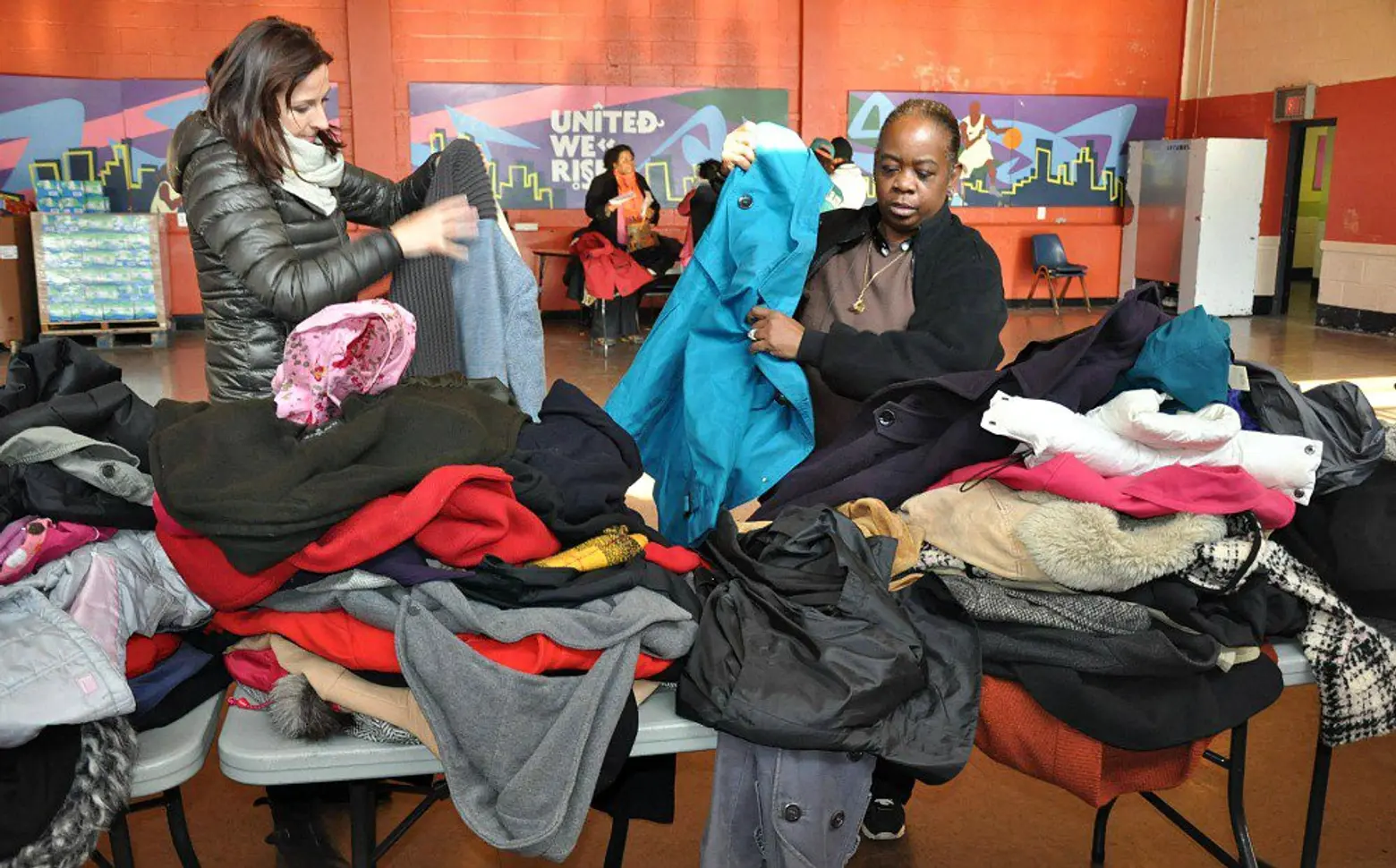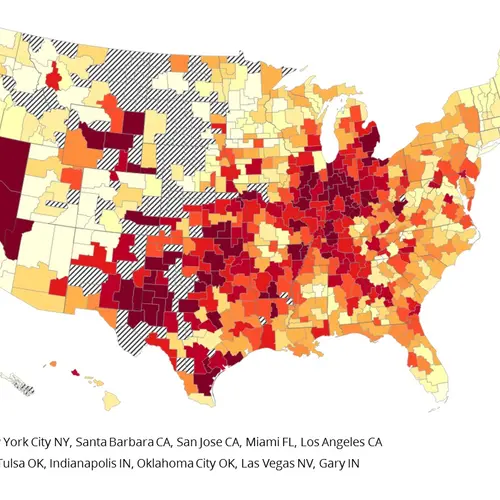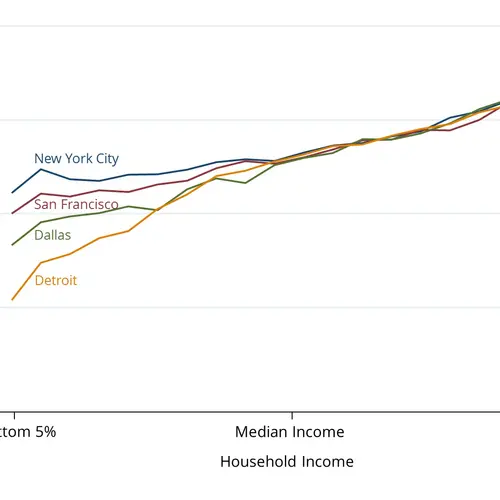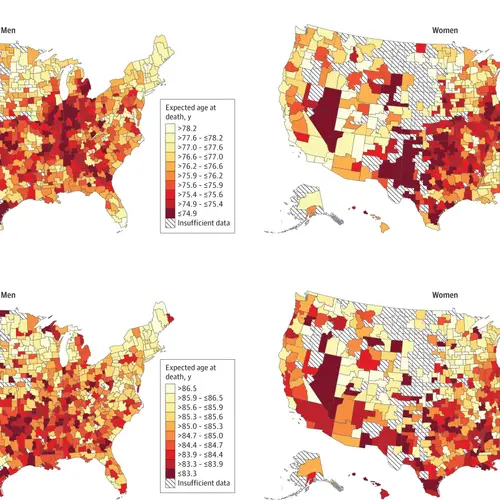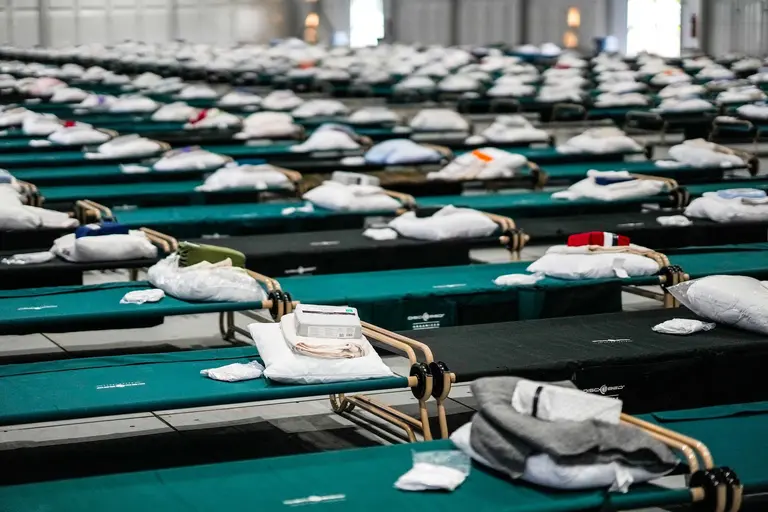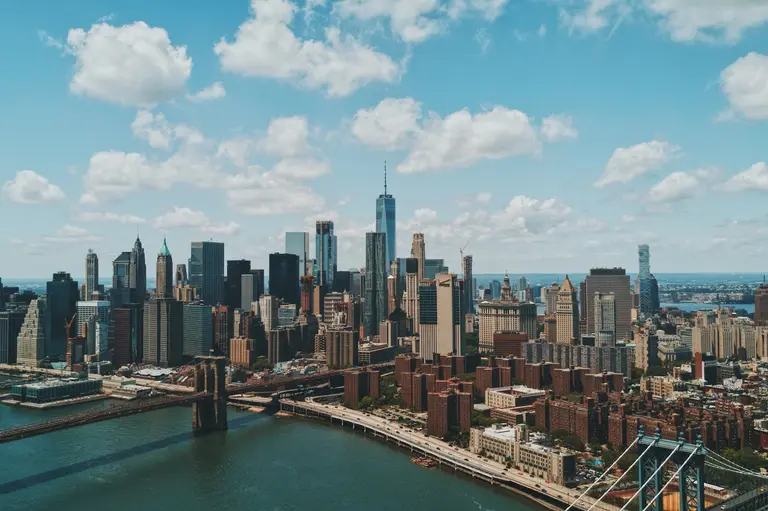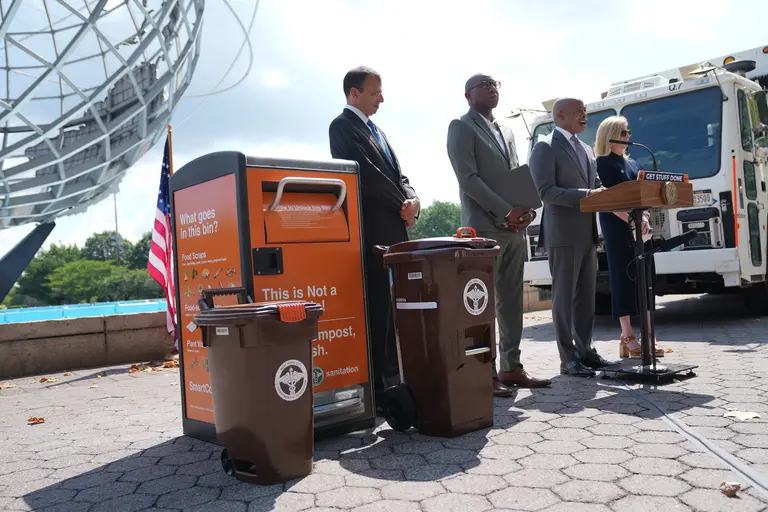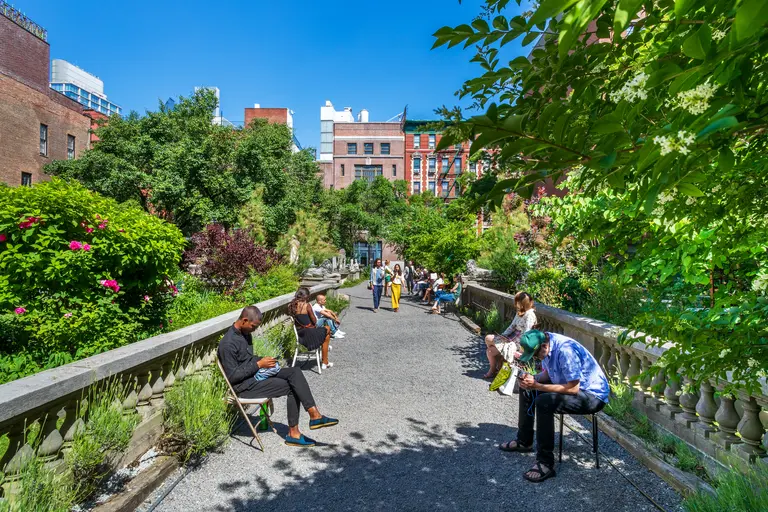Do Poor New Yorkers Live Longer? Study Says Yes, Despite the Income Gap
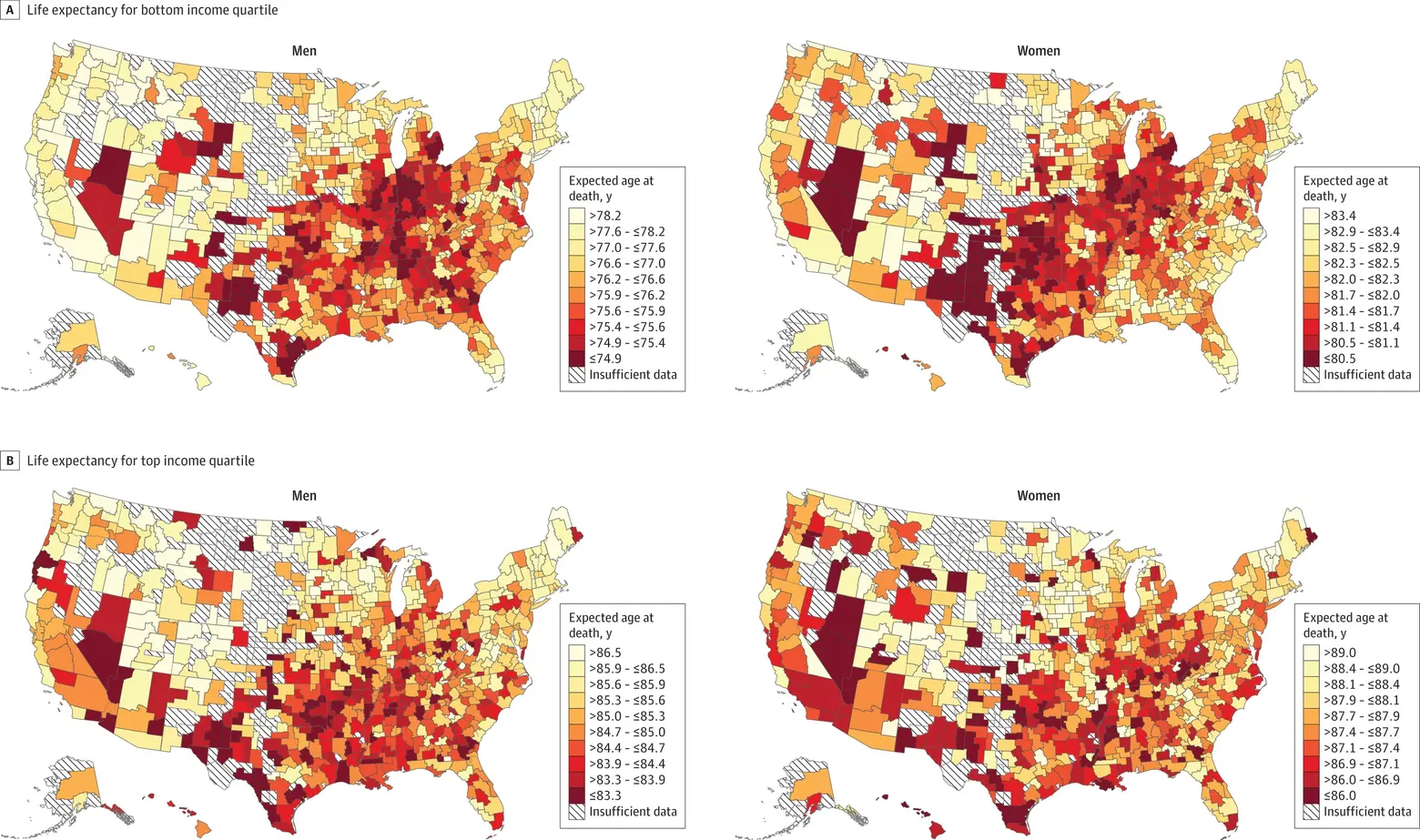
“The Association Between Income and Life Expectancy in the United States, 2001-2014,” by the Journal of the American Medical Association; Life expectancy for all income quartiles.
The New York Times recently took a look at the results of a study published in the Journal of the American Medical Association (JAMA). Using data compiled from anonymous earnings records and death certificates, the results offer some provocative insights into the importance of geography to how long people live–poor people in particular.
There is, as we’ve already assumed, a longevity gap between the rich (in this study, people with household incomes of over $100,000 per year) and poor (those with incomes less than $28,000). In Manhattan, for example, the average poor person will die about six years before the average rich one. But that gap is about a year and a half smaller than the same income/longevity gap for the United States as a whole. Tulsa and Detroit, for example, were two cities with the lowest levels of life expectancy among the low-income population, with the results already adjusted for differences based on race.
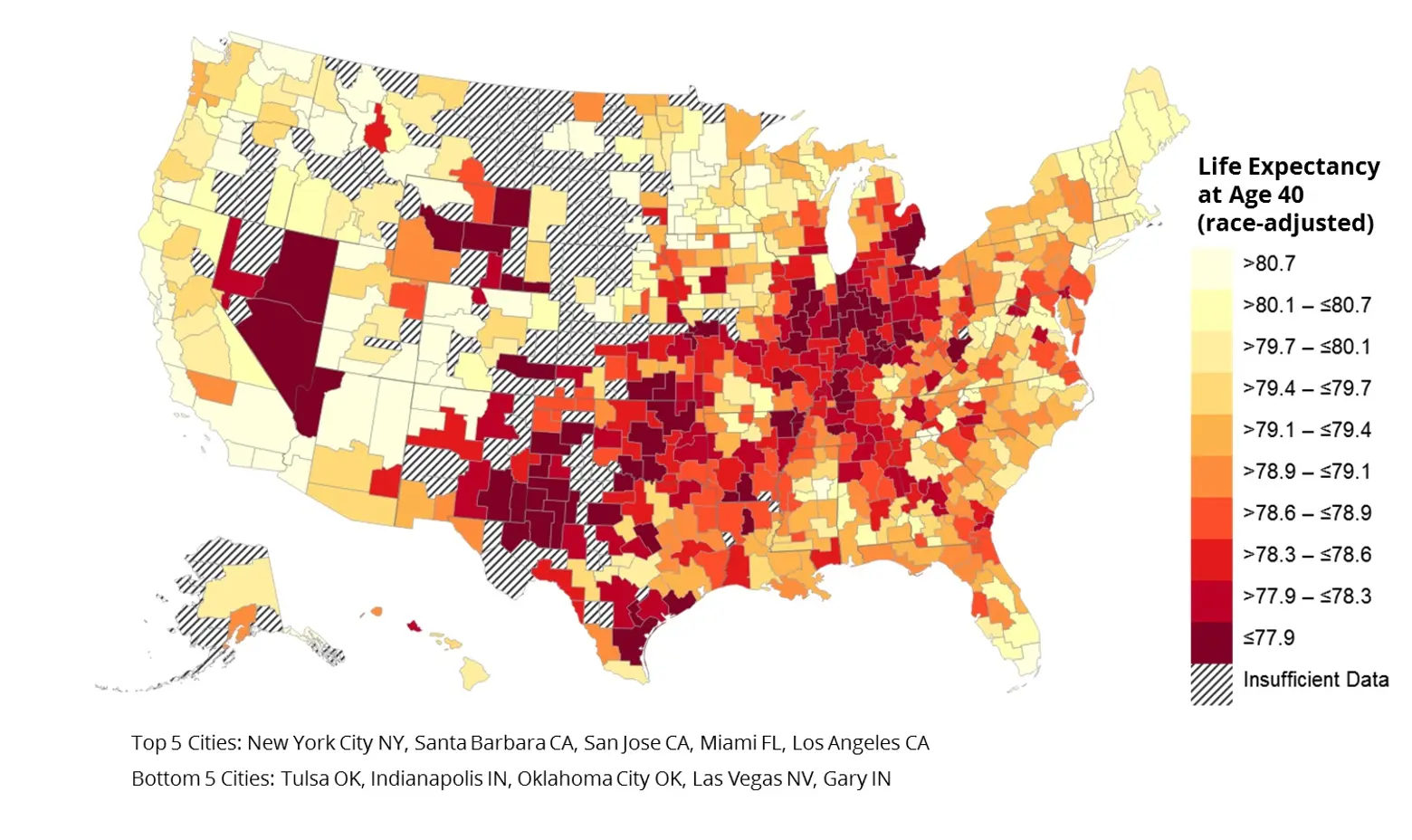
The Health Inequality Project, Geography of Life Expectancy in the Bottom Income Quartile
The study revealed a great deal of local variation in life expectancy. In New York or Santa Barbara, California, the average poor person lived four years longer than in the aforementioned Gary, Indiana, or Tulsa, Oklahoma. You can enter your location to see what the study found about where you live.
According to the Health Inequality Project, which uses this data to “measure differences in life expectancy by income across areas and identify strategies to improve health outcomes for low-income Americans,” for low-income people, life expectancy is highest in California, New York, and Vermont, and lowest in Nevada, with the next lowest forming a belt connecting Michigan, Ohio, Indiana, Kentucky, Tennessee, Arkansas, Oklahoma and Kansas.
Surprisingly, the study also found a great deal of variation even within metro areas. Within nine New York area counties, life spans for the poor vary by 2.3 years. Life expectancies were high in Manhattan, but even higher in Brooklyn, Queens, and Nassau County (compared to other counties).
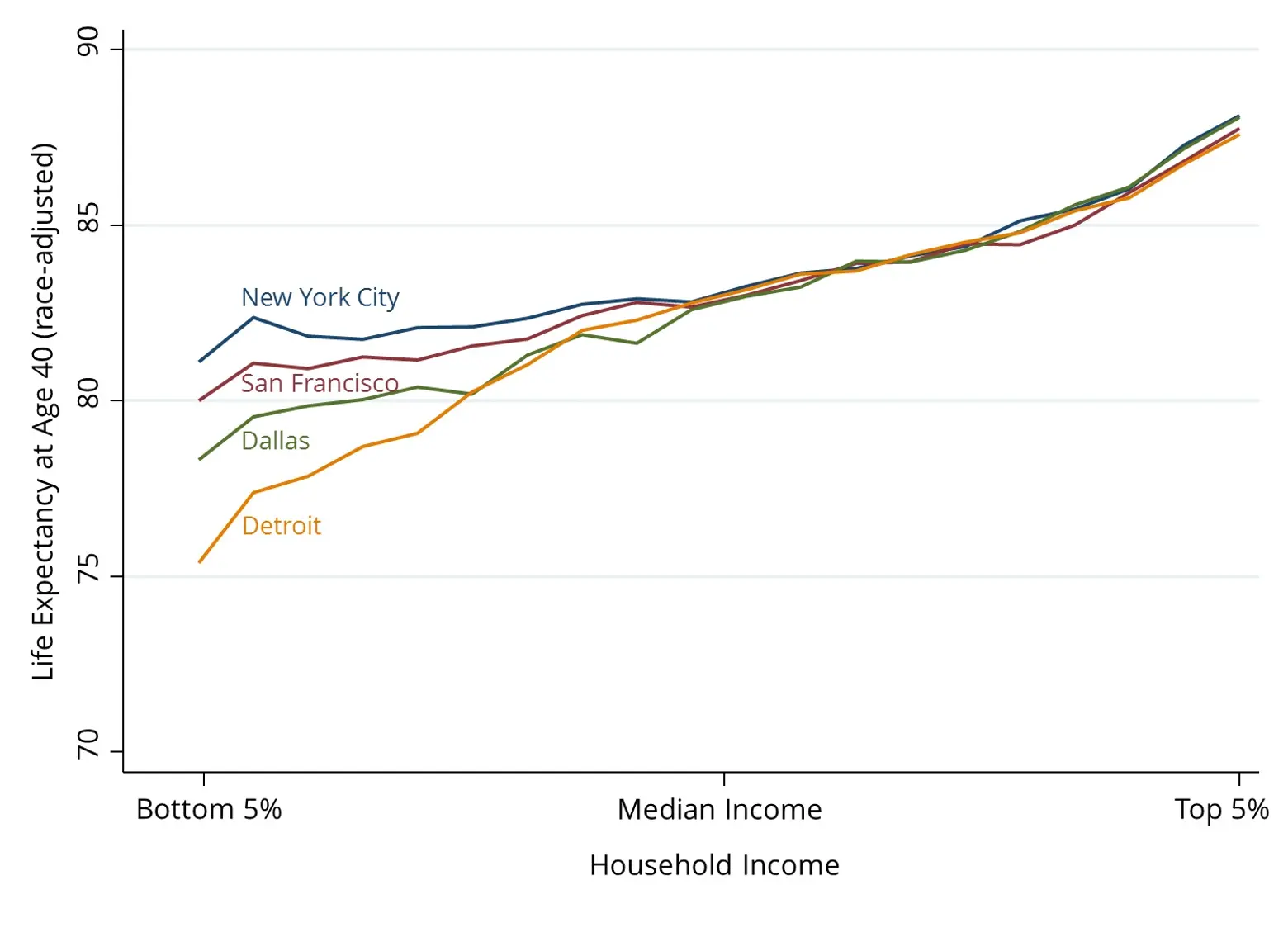
The Health Inequality Project, Local Life Expectancies by Income
As explained in a previous article, though the rich live longer anywhere, geography really seems to matter for the poor. In cities like New York, Los Angeles, and Birmingham, Alabama, the poor “live nearly as long as their middle-class neighbors or have seen rising life expectancy in the 21st century.”
The overall conclusions were that the gap in lifespans between rich and poor grew between 2001 to 2014. The wealthiest one percent of American men live 15 years longer than the poorest one percent (for women, the gap is 10 years). And they live longer no matter where they live. Poor Americans gained very little in the way of longevity over that time, but the big differences were among different places. The chart on this page shows where the poor live the shortest and the longest.
Most theories revolve around the idea that wealth buys better medical care, and the fact that the affluent seem to live in healthier ways, exercising more, smoking less and being less likely to be obese–and it follows that healthier people can keep more demanding jobs and have higher incomes.
But why does geography make a difference? New York beat the rest of the U.S. in nearly all factors linked to high longevity: It’s home to a large number of immigrants and college graduates; the city invests a great deal of money in social services and has lower rates of smoking and obesity than most other locations. On the other side of things, life expectancy for the poor is worst in places like Nevada, where drug addiction and overdose are a growing concern.
The study concludes optimistically with the possibility that the “right mix of steps to improve habits and public health could help people live longer, regardless of how much money they make.” The important question is, “What improves health in a community?”
[Via NYT]
RELATED:
- Study Finds Widening Life Expectancy Gap Between Rich and Poor Americans
- Find Out if You’ll Be Poor With This Economic Risk Calculator
- New Report Shares What You Need to be Earn to be Considered ‘Rich’ in Your City
